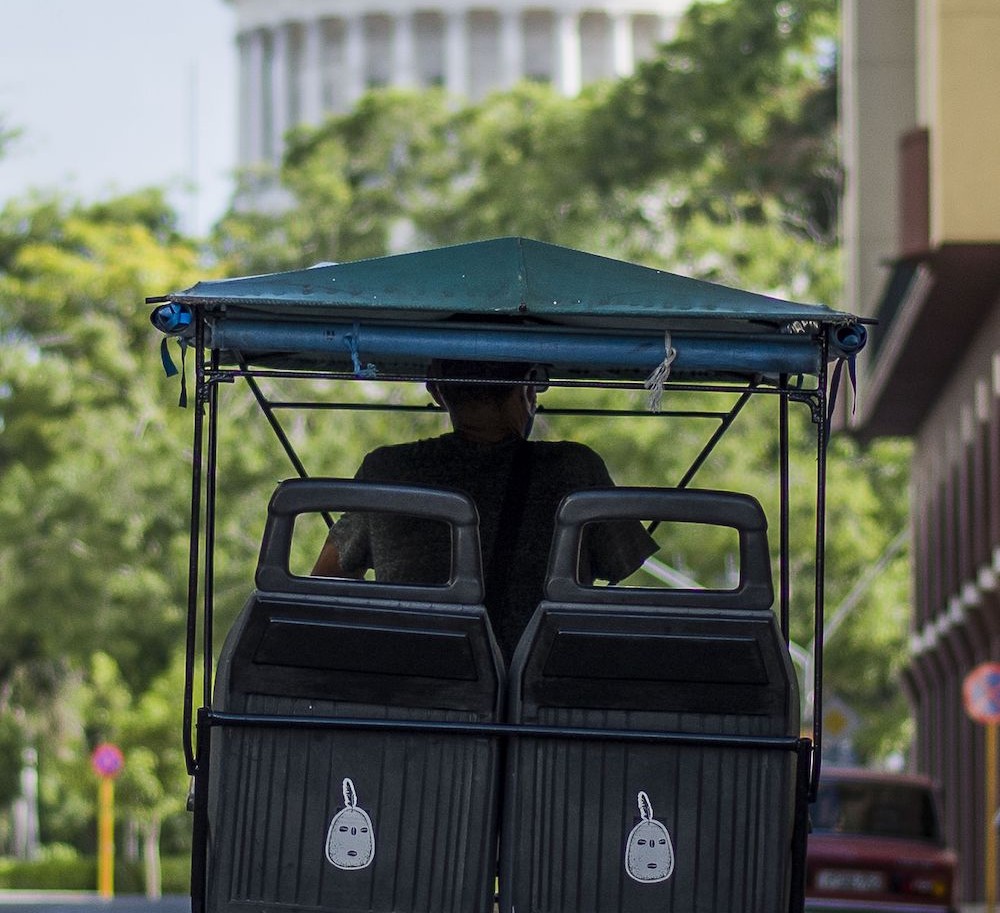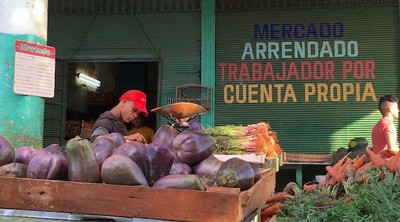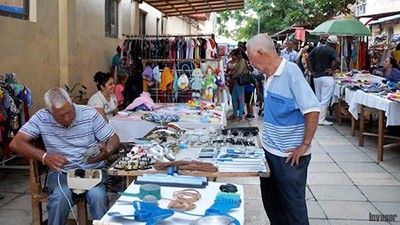The Expansion of the Private Sector in Cuba
Cuba needs a regulatory framework, not a list of prohibitive activities, for the private sector to reach its potential and contribute to the country’s development.
By David Pajón Espina
Economist
Introduction
In early February 2021, the Cuban government announced the implementation of new measures as part of the transformation of the economic model. They incorporate elements that had been considered since 2010 and reflect a confluence of popular consensus, academic criteria, and political will, as they had been successively considered in the most important official documents governing economic policy since 2010.
These measures entail the expansion of the gamut of activities available to self-employed workers (trabajadores de cuenta propia, or TCPs), outlined in the National Classification of Economic Activities (CNAE). This list offers more than 2,000 options and it excludes 124 categories of activities in a so-called negative list. The announcement was followed by the media appearances of senior officials who discussed other complementary reforms.
In what context are these decisions taking place, and what can be expected of them?
This article explores some possible repercussions for the domestic private sector based on what has been disclosed so far, while there are still some unknowns that remain to be clarified.
Political and Economic Situation
By the end of 2020, official figures from the Cuban government indicated an approximate 11% drop in GDP, which is even more dire than the ECLAC forecasts. The figures demonstrate the severity of a crisis that, more than any statistics can convey, the population has endured on a daily basis in an arduous battle for survival, including dealing with the deadly COVID-19 pandemic, a shortage in the supply of basic goods and services, and declining nominal and real income. Although authorities predict a GDP recovery between 6% and 7% for 2021, this growth objective is complicated by the ongoing conditions that led to the crisis.
The global pandemic, which precipitated and exacerbated an inevitable crisis, has had a resurgence of even greater proportions in 2021, claiming human lives and hindering the recovery in production as well as the normalization of tourism and travel, which are essential for the reactivation of the Cuban economy.
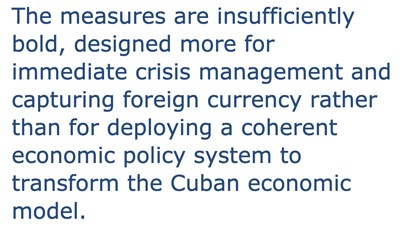
In terms of external relations, although the Biden administration seems to be considering a position inclined toward rapprochement and dismantling the most hostile measures deployed by the previous president, those measures remain in place. They continue to limit both the Cuban government and the people’s access to income in foreign currencies, energy equipment, restrict the flow of imports, and deter foreign investors. And in the domestic sphere, the measures implemented were insufficiently bold, designed more for immediate crisis management and capturing foreign currency rather than for deploying a coherent economic policy system aimed to transform the Cuban economic model and promote the necessary dynamics for growth and efficiency. The postponement of the structural changes reinforces a cycle that deepens the crisis and is limited to merely coping.
At the end of 2019, 1,506,600 Cubans—nearly one-third of the workforce—was employed in the domestic private sector, a significant increase from 20% at the turn of this century and qualitatively more diverse in terms of activities and forms of ownership and management. Today, the Cuban private sector is a heterogeneous group primarily composed of TCPs (the regulatory euphemism is “self employed sector” and includes private medium, small, and micro entrepreneurs that operate legally but without separate legal status), their contracted workers and independent self-employed workers, as well as members of agricultural and non-agricultural cooperatives and private farmers, whether or not they own the land they tend.
The “self-employed” are particularly noteworthy, since they were part of the objectives of the reform implemented a decade ago[i], and because of their growth and diversification in a complex context. In 2010, a list was published of some 180 activities that TCPs were permitted to develop, with relatively simple entry procedures for most, along with authorization for those enterprises to hire workers. It was the boldest opening since 1968, when the Cuban State began to control practically the entire economy in the non-agricultural sphere.
It is interesting that the mere authorization to engage in private activity led to a growth in the private sector from 157,000 registered workers in September 2010 (one month before the opening came into force) to more than 630,000 in the first quarter of 2020. This took place in a context of:
- Restricted access to wholesale markets;
- Association with the public sector and formal foreign trade channels;
- An absence of full-spectrum lending;
- Legal protection for associations with foreign capital; and
- An oscillating regulatory framework, among others.
Even so, private enterprises quadrupled thanks to great innovation, using endogenous resources, and even succeeding in attracting foreign capital flows through informal channels. Altogether, self-employed and private agricultural producers have been net job creators during the past decade, in contrast to the process of “job destruction” in the state sector, a phenomenon that has been rigorously studied by some Cuban researchers (Monreal, 2020).
On the other hand, the expansion of self-employment occurred in the face of strong negative shocks. In 2017 the granting of new licenses was canceled for five activities and put on hold for 27 others, with no timeframe set for their restoration. This arbitrary decision conspired against the dynamics of competition, destroyed family and individual projects, shattered the cash flow forecast of ongoing projects, and postponed or canceled expansion plans for local entrepreneurs and sometimes for their foreign partners or sponsors as well. Emilio Morales has demonstrated a slowdown in remittance flows in recent years that he ties to the reform paralysis (Morales, 2020).
In December 2018, several of the previously suspended licenses were restored, but the reopening was modulated by a new regulatory specification that included: additional bureaucratic steps to request authorizations and enhanced review of the enterprises’ operational capacity; extended processing times; and the maintenance of several gray regulatory areas prone to differing interpretation by regulators in the already asymmetrical relationships between regulatory institutions and private entities.
The spectrum of opportunities that had opened after the rapprochement between Cuba and the United States was also turned upside down after the Trump administration opted to break off talks and increase sanctions. Just to mention a few of the measures that had a direct impact on the private sector, consider: the Trump administration’s unfortunate handling of the “sonic incidents” and the withdrawal of most of the personnel from the U.S. Embassy in Havana; the reduction of categories of permitted travel; the ban on cruise ships; restrictions on direct flights; and an approach generally aimed at discouraging the flow of travelers.
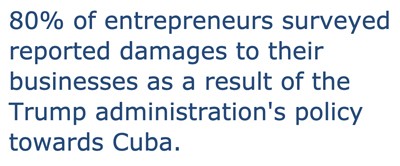
In turn, the possibility of procuring supplies in the United States has been drastically reduced. Obtaining new visas must be done in a third country, and the granting of multiple-entry visas has been eliminated. Restrictions were also added on the amounts, people, and channels authorized for sending remittances, thus reducing the formal means of obtaining liquidity.
According to a 2019 study by the consulting firm AUGE, 80% of entrepreneurs surveyed reported damages to their businesses as a result of the Trump administration's policy towards Cuba, mainly in terms of decreased demand, increased difficulties to obtain inputs, and interrupted investments.
Impact of the Pandemic
In addition to the uncertainty resulting from the aforementioned circumstances, the private sector was then shaken up by the impact of the pandemic. Some 250,000 self-employed workers—that is, about 40% of those registered—requested suspension of their licenses as a consequence of the initial border closure, social isolation and the partial paralysis of economic activity by decree, and a lack of supplies and demand.[ii] AUGE's assessment consistently pointed to widespread damage throughout the private sector, identifying the most affected areas and three levels of impact. Some 15 activities, encompassing 198,000 TCPs (33% of the total), were among the hardest hit, mainly those directly linked to tourism or related services (AUGE, 2020).
In a context of diminished fiscal resources since before the pandemic, and stretched to the limit by the public health crisis (a fiscal deficit of 6.2% and 20% of GDP in 2019 and 2020), the margins of government support to private enterprises were limited. These included:
- The establishment of relatively simple processes for requesting the temporary suspension of operations and tax charges;
- A decrease in monthly fees for affected activities;
- The extension of grace periods for liquidating obligations;
- Exempting people from submitting an affidavit if they stopped working for six months or more;
- The elimination of a ceiling on deductible expenses; and
- An increase in the minimum income subject to tax.
However, the severity of the crisis has once again put into stark relief the ineffectiveness of the current configuration of the components of the Cuban economic model. The playing field where the different actors operate is so uneven that none can guarantee optimal production and the national productive fabric cannot be coherently articulated.
In July 2020, the authorities announced a crisis management strategy that, in addition to implementing the short-term maneuvers, broke with the previous government inertia, bringing back to the official discourse essential elements from the 2010 reform that had never been implemented and calling for its deepening, including the expansion of the private sector.
Beyond generating positive expectations, and related to the state’s peremptory need to collect foreign currency, in practical terms the first measure to be implemented in favor of private enterprises was the opening of access to formal foreign trade channels for the TCPs and members of cooperatives. The design of these processes:
- Maintained state monopoly control over the export-import execution in the hands of a limited set of companies with a history of deficient performance;
- Revealed an overly rent-seeking approach on behalf of companies and the state; and
- Limited access to foreign currency as an exclusionary element (Pajón, 2020).
But it also:
- Expanded markets beyond national borders;
- Opened channels for the formal entry of foreign currency into the accounts of private parties; and
- Fostered mechanisms to obtain locally unavailable capital goods and raw materials.
Expansion and Limitation of Options
The next step in the reforms, with an emphasis on the ownership/management binomial, was the announcement of the replacement of the positive list—which provided fundamentally naively limited options. The positive list was replaced with a list of activities prohibited to the private sector based on the CNAE classifications (the negative list), which both expanded options and restricted previously authorized options. This pathway had been carefully outlined by scholars such as Oscar Fernández in June of the previous year (Fernández, 2020).

The expansion of options is complemented by the elimination of the current restrictions on the scope of activity contained in prior licenses. In the new context, the approval of a TCP’s project would guarantee a license with some leeway to perform multiple associated permitted activities. In addition, they include: 1) the establishment of a “single window” (ventanilla única) to facilitate the application procedures to obtain a license, 2) the general adoption of the practice of submitting a single affidavit on behalf of all individuals associated with the TCP enterprise, 3) the replacement of certain fixed payments by quarterly payments based on income, as well as readjustments to the fixed monthly amounts to be paid based on activities performed.
The most important development is the potential expansion of the private sector. Even with the negative list, the use of the CNAE classifications and the establishment of licenses that allow multiple permitted activities greatly broadens the spectrum of options available to the private sector and encourages a more complex and diverse development of the productive fabric and of services, now on a formal basis. To cite two examples from the CNAE in important areas, which are very depressed in Cuba: there is a wealth of options available in section F (Construction) without prohibited classes on the negative list, and in section C (Manufacturing Industries), even though 24 classes are forbidden for TCPs.
In a country where the manufacturing sector makes up around 11% of GDP at constant prices, an increased incorporation of goods produced by the private sector is essential. The CNAE negative list definitely expands opportunities, even more so if we take into account the restrictive nature of the current list.
Just as they had within the narrower framework, private actors will continue to develop innovative projects within any possible gaps in the negative list. The nomenclature is an invitation to creativity within formal spaces and, in many cases, will avoid the use of current ambiguous “scope of activity” licenses that keep in suspense a large group of entrepreneurs who have are relying on their legality even in the current context of regulatory precariousness.
Nonetheless, in terms of access to foreign trade, the new policy, like its predecessor, has shortcomings and is disconnected from other actions necessary to guarantee that the private sector reaches its full potential.
Lack of Formal Business Structures
What is conspicuously absent from the announcement, both in the public notes on the approval in the Council of Ministers (Puig, 2021) and in officials’ subsequent media appearances (Alonso and others, 2021), is any reference to a transformation from the current “self-employed” status to more formal business structures. Nothing has been said about the recognition of micro, small and medium-sized enterprises that the Cuban government itself mentioned as part of the changes to come.
The fact that the new regulations are still being finalized and that their implementation timeline is unknown and, given the typically long periods between the announcement and implementation of measures of this caliber, suggests that being able to organize with separate legal existence will be delayed. Meanwhile, the option of organizing as a non-agricultural cooperative, a possible means of obtaining recognition as a legal person, remains an experimental and limited project.

The postponement of allowing private actors from organizing enterprises with separate legal existence is a serious impediment to recovery amid the current disaster. It would mean foregoing potential productive synergies by transitioning from a weak descriptive category of “self-employment” to formal business structures, a change whose additional contribution to GDP has been estimated between 1.5% and 1.7% (Monreal, 2020). In practice, organizing as a legal person would offer private parties a greater capacity for internal dialogue to negotiate a fluid and equitable access to foreign trade and investment, and to wholesale markets. It could also provide them with an organizational capacity and a volume of physical and financial assets to face the explicit and implicit barriers that are now outlawed by the negative list of CNAE activities.
The Negative List
Although it is in draft form, a notable set of restricted activities on the publicly available negative list reveals contradictions with the expansionist spirit of discourse by the Minister of Economy and the Minister of Labor, who expressed that “there is only one economy” and the need for “the country to count on all economic actors toward the common good.” The exclusion criteria by which the authorities determined which activities “should not be carried out by TCPs” are neither transparent nor obvious. Not even notions of scale or formal organizational arrangements are used in categorizing activities on the negative list, which now includes many carried out today.
At best, the selection of forbidden activities reveals an ignorance of the productive fabric and services that are currently being provided, and reflects a disdain for the private sector’s potential for achieving scale and sophistication. Unfortunately, it is likely that the criteria used in developing the negative list also corresponds to archaic policy implementation plans, inspired by rent-seeking and an obsession with control, which guarantees artificially created monopoly spaces for state enterprises.
Impoverishing Tourism
A remarkable group of restricted activities falls under the tourism sector. For example, the activities of travel agencies and tour operators (Classes 7911 and 7912) and reservation services and related activities (7990) remain prohibited, which makes the participation of national private companies extremely complex or even forbidden in:
- The activities of agencies primarily engaged in selling travel services, organized travel, and transportation and accommodation services to the general public and commercial clients (7911).
- The organization of travel service packages for sale through travel agencies or by tour operators themselves that may include elements such as transportation, accommodation, meals, visits to museums, historical and cultural places and attendance at theatrical and musical shows and sporting events (7912).
- The provision of other services for travel-related arrangements: reservations for transportation, hotels, restaurants, car rental, entertainment, and sports, etc.; […] ticketing activities for plays, sports competitions, and other entertainment activities; visitor assistance services: provision of travel information to clients, tour guide activities; tourism promotion activities (7990).
Beyond the obvious lodgings and gastronomic establishments with a market orientation to foreigners, the domestic private sector took advantage of the 2010 opening and the heyday of the rapprochement between Cuba and the United States, and created competitive, elastic, and innovative offerings, which helped diversify the state-led "sun and beach” model. Before the pandemic, an immense and interrelated network of landlords, drivers, nightclubs, bars, cafes, restaurants, food manufacturers, transportation and accommodation fixers, artists, farm owners, and workshops had created conditions to receive visitors in their facilities. Comprehensive trip planners and guides with standardized or highly specialized repertoires were operating and satisfying demanding market segments.
Hindering Existing Legal Activities
The exclusions on the current negative list may even be interpreted to hinder the work of occupations that are already officially exercised: accommodation and transportation management, and the promotion of any formal activity related to tourism. If that is not the authorities’ intention, at the least it remains a grey area left to differing interpretations.
The exclusion of the roles of travel agencies, including planning and tour guide services, is drastic and lamentable. Meanwhile, the state remains focused on an outsized hotel construction effort without the capacity or incentives to massively develop an attractive non-hotel portfolio. It also discriminates against countless large, medium and small foreign travel agencies with formal operations and offices in place.
Inducing Concealment and Informality
Restricting access for private parties currently involved in these activities or planning projects impoverishes the national supply as a whole, destroys the dynamics of competition, induces tax manipulation, and encourages the continuity of concealment practices through the use of the “scope of activity” provisions in the current licenses in some cases, and a resort to absolute informality in others.
On the other hand, the authorities' monopolistic appetite clouds their vision regarding the possibilities for a post-pandemic tourism recovery, marked by a new rapprochement with the United States and by the influx of North American visitors, with an affinity for interaction with the private sector and by the requirements of the current regulatory framework. The participation of the private sector in multiple areas, especially on the front line of tourism services, makes them interlocutors with the capacity to increase revenue for all parties and magnify the positive effects in a new scenario of abundance.
Excluded Professionals
Other notable prohibitions on the negative list are professional, scientific, and technical activities, which would offer infinite options to the highly qualified local workforce. The negative list once again prohibits legal activities, accounting (except bookkeeping), architecture, engineering, and research, among others in a long list. These constraints have multiple downsides. In terms of expectations, they greatly impact an important group of Cubans eager to develop their professional skills in their own ventures.
At the same time, it is counterproductive to continue to forbid licenses for these activities when, in practice, businesses of growing importance in practically any permitted area of the CNAE will require accounting, legal, and even research services. Using the “scope of activity” provisions, the businesses will end up exercising these activities anyway and doing so outside of the scope of necessary regulatory and supervisory processes.
Lack of Wholesale Markets
The possibilities for wholesale markets are also very restricted, thus denying private enterprises the chance to enter an area controlled by the state: the TCPs have very limited access and are not a priority at all. Furthermore, their exclusion ignores the complexities and dynamism of business practices, in which from one moment to the next, for a variety of reasons, volumes of inputs and production methods, whether domestic or imported, may cease to be useful, precipitating their sale by any means in order to guarantee liquidity and sustainable cash flows.
The “Single Window”
In addition to the expansion of activities and the restrictions on the negative list, two other interesting elements appear in the package of measures: the consolidation of the processes for applying and granting licenses through a “single window” (única ventanilla) located in the municipal Labor offices, with the exception of transportation workers, who would go to authorized entities at the Ministry of Transportation, as well as tax modifications.
This one-stop shop should simplify the process and save time, as it reduces the number of institutions one must visit to obtain a license. However, it is not clear what time frames will be used to respond to the project proposals. (Current reviews of the operations of locations that have been designated to consider projects suggests that there will be significant delays, as there are today.) It is not clear if protections will be afforded to applicants given the typical delays in approval. Nor is it clear if the civil servants in charge of receiving and approving projects will be instructed to assume a receptive stance toward innovation (which will surely constitute a considerable volume of the projects presented) or if the prohibitions on the negative list will be used instead to flag and deny any proposals that might have the slightest possible relation to a prohibited activity.
Taxes
From a taxation standpoint, the deductibility of 100% of outlays and investment expenses, as well as increases in the minimum revenue threshold subject to tax (from the current 10,000 CUP to 39,120 CUP) aim to reduce the tax burden and increase reporting and economic transparency. The impact in terms of the actual tax filing will also depend on how the progressive scales are configured. Today, taxpayers quickly reach a point where they must pay 50% of additional income as taxes. Due to the evolution of the exchange rate of the CUP vis-à-vis the USD in the informal market, and given the diminished purchasing power of the CUP, an exchange rate anchor will be necessary to help effectively take stock of when one must pay the maximum tax burden.
In any case, the scheme must be attractive to private enterprises, because in a context in which the tax burden is widely considered excessive, the option of under-reporting revenue will remain the norm.
Conclusion
In general, fundamentally positive effects can be expected. The measures:
- Give continuity to the economic reforms undertaken;
- Touch upon transcendental elements of the economic model; and
- Constitute the largest expansion of the domestic private sector that the Cuban government has ever promoted.
They also strengthen spaces of activity for the private sector. Also, they will be more difficult to dismantle in the face of possible policy vacillations that may occur in the future.
However, despite the importance of the last two packages of measures that are primarily of interest to the private sector, access to foreign trade and the expansion of activities through the negative list, design flaws remain. Regressive administrative features predominate and are overly rent-seeking, and the creation of areas reserved for the state monopoly is based on unfounded or inexplicit criteria.

Furthermore, implementation processes take too long, to the point of excluding:
- Essential changes such as transforming part of the current “self-employed” sector into formal business structures;
- The revision of conditions of access to foreign trade;
- The possibility for formal agreements for capturing foreign capital flows; and
- A redesign of the credit policy that guarantees general access to formal sources of financing, among others.
These have not been announced in tandem with the current measures, but rather must await their turn, it seems. In some cases, it appears unlikely that they would be implemented.
When measures accumulate that by their own design frustrate the stated purpose of legislation, the potential benefits are diluted. The speed or even the overall access to a pathway for growth and development that the country urgently needs is thwarted. In the same way, other essential aspects of the reform remain exposed, such as the monetary system: if a desired outcome is the resizing of state productive structures, then the absence of a robust private sector conspires against the necessary absorption of surplus workers from the state sector.
The private sector has demonstrated resilience, the capacity for innovation, and the potential to generate jobs and contribute to the productive transformation. It has satisfied consumer demand in niches not addressed by the state and prior non-state productive areas, and captured foreign resources even in a context of non-existent formal property rights.
Continuing to marginalize certain spaces of economic activity does not make sense. The authorities should consider that the recent measures, which are still being analyzed, must be approved quickly, stripped of restrictive obstacles, and coherently complemented with other essential measures. A flexible regulatory framework oriented to the development of the private sector that contributes to the country’s development rather than to exclusionary measures is the most pressing need in Cuba today.
Bibliography
Alonso, R., et al. (June 11, 2020). "Gobierno cubano informa sobre medidas para la recuperación tras la epidemia de la COVID-19", Cubadebate.
Alonso, R., et al. (February 9, 2021). "¿Cuáles son las nuevas disposiciones para el trabajo por cuenta propia en Cuba?", Cubadebate
AUGE (2019). Impacto sobre el sector privado de la política hacia Cuba de la administración Trump.
AUGE (2020). El emprendimiento privado en Cuba. Un paciente positivo a la COVID-19.
AUGE (2021). Un nuevo escenario para el trabajo por cuenta propia. Resumen ejecutivo.
Colina, H. (2020). "Trabajo por cuenta propia en tiempos de la COVID-19", Alma Mater.
Fernández, O. (June 4, 2020). "Implementar las PYMES: un posible cómo", Progreso Semanal.
Ministerio de Justicia. (October 8, 2010). Gaceta Oficial de la República de Cuba (012 Ext. Especial).
Monreal, P. (April 28, 2020). "El establecimiento de PYMES en Cuba pudiera aumentar el Producto Interno Bruto entre 1,5 y 1,7%" El Estado como tal.
Morales, E. (2020). COVID-19 puede hacer declinar las remesas a Cuba entre un 30 y 40% en el 2020. Business Report, Nº 2, THCG.
Pajón, D. J. (September 15, 2020). "Comercio exterior y sector no estatal en Cuba: apertura que da para más" IPS
Puig, Y. (February 6, 2021). Consejo de Ministros: "En la senda de perfeccionar el proyecto social y económico cubano" Granma

David Jesús Pajón Espina, Cuban economist, professor and entrepreneur. His areas of research interest are the international commerce in medical services and the dynamics of the Cuban private sector. He has a degree in global economics from the faculty of economics as well as a Master’s in Economics from the University of Havana. He has presented in numerous conferences both in Cuba and abroad, including the congresses of the Latin American Studies Association (LASA).

